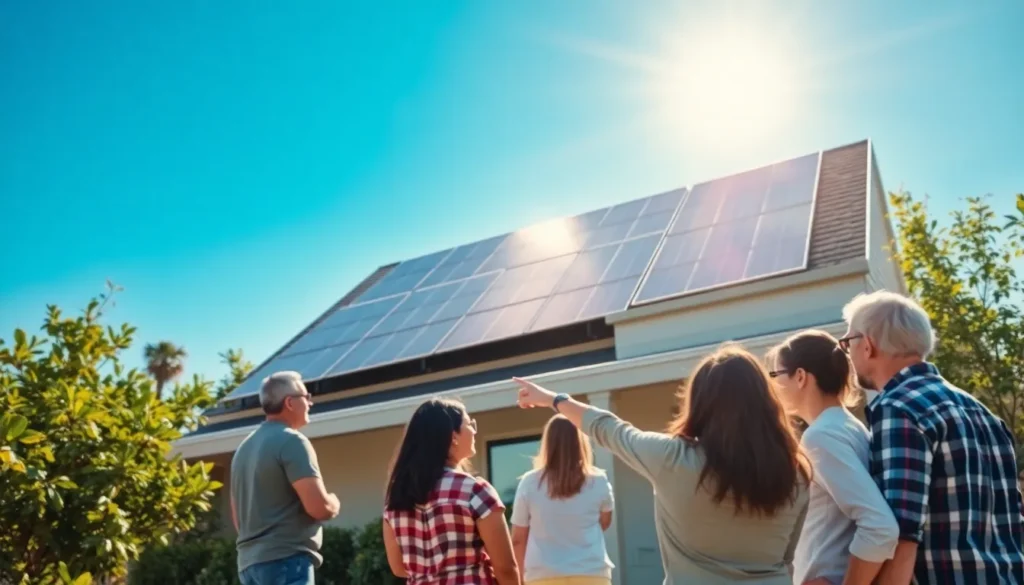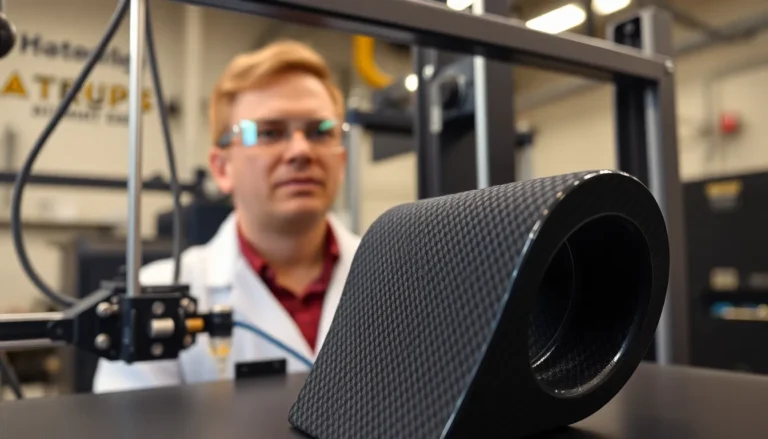Table of Contents
ToggleIn a world where gadgets seem to multiply faster than rabbits, sustainable technology is the cool kid on the block. Imagine a tech-savvy superhero swooping in to save the planet while still letting you binge-watch your favorite shows guilt-free. That’s the magic of sustainable tech—it’s all about innovation that respects Mother Earth while keeping our lifestyles in check.
From solar panels that soak up the sun like a beachgoer to electric cars that whisper sweet nothings to the environment, sustainable technology is reshaping how we live, work, and play. It’s not just a trend; it’s a way to ensure future generations can enjoy the same luxuries we do today. So, buckle up and get ready to dive into the world of eco-friendly gadgets that are as good for the planet as they are for your tech cravings.
What Is Sustainable Technology?
Sustainable technology refers to the development and use of solutions that minimize negative environmental impacts. It emphasizes the efficient use of resources, reduction of waste, and the promotion of renewable energy sources. Examples include solar panels, wind turbines, and electric vehicles, which harness natural resources to generate energy.
In addition to energy generation, sustainable technology enhances efficiency in industries such as agriculture and manufacturing. Precision agriculture employs sensors and data analysis to optimize resource usage, minimizing water and chemical waste. Similarly, green building practices utilize eco-friendly materials and energy-efficient designs to reduce the carbon footprint of structures.
Innovations in sustainable technology also address waste management challenges. For instance, recycling technology converts materials into reusable products, significantly decreasing landfill waste. Composting systems process organic materials, enriching soil while reducing methane emissions from landfills.
Moreover, sustainable tech incorporates smart devices that contribute to energy conservation. Smart thermostats, for example, adjust heating and cooling based on occupancy, leading to lower energy consumption. Home automation systems facilitate the integration of various eco-friendly technologies, enhancing overall sustainability.
Public policies and consumer demand drive the advancement of sustainable technology. Governments worldwide implement regulations and incentives to encourage the adoption of green solutions. Consumers increasingly seek products that align with eco-friendly values, pushing businesses to innovate sustainably.
Understanding sustainable technology includes recognizing its role in mitigating climate change and fostering a healthier planet. By prioritizing sustainability, society embraces a path toward a more balanced coexistence between advanced technology and environmental stewardship.
Key Principles of Sustainable Technology

Sustainable technology hinges on principles that guide eco-friendly innovations. These principles encompass environmental impact, economic viability, and social equity.
Environmental Impact
Minimizing ecological footprints ranks high in sustainable technology. Innovations often focus on reducing harmful emissions and conserving resources. Renewable energy sources, like solar and wind, power many sustainable solutions. Advanced waste management techniques divert materials from landfills while increasing recycling rates. Precision agriculture applies these technologies to promote soil health and water conservation. At its core, sustainable tech enhances ecosystems and promotes biodiversity.
Economic Viability
Sustainable technology proves economically sound by promoting long-term cost savings. Initial investments in renewable energy often lead to lower operational costs. Efficiency gains enable businesses to optimize resource utilization. Green products frequently attract consumers seeking eco-friendly options, thus driving demand. Policies that support sustainable practices foster job creation in emerging green industries. Ultimately, sustainable tech presents lucrative opportunities while protecting the environment.
Social Equity
Ensuring equal access to sustainable technologies promotes inclusive growth. Communities benefit from affordable renewable energy solutions and efficient transportation. Educational programs raise awareness about sustainable practices, encouraging responsible consumption. Social equity in sustainable tech also focuses on creating jobs that uplift marginalized groups. Innovations often strive to address the disparities faced by underserved populations. By prioritizing equity, sustainable technology fosters a fairer, more resilient society.
Examples of Sustainable Technology
Sustainable technology encompasses various innovative solutions that prioritize environmental health. The following subsections illustrate key examples.
Renewable Energy Solutions
Solar panels exemplify renewable energy technology by converting sunlight into electricity. Wind turbines harness wind energy, allowing for cleaner electricity generation. Hydroelectric power plants utilize water flow to produce energy without fossil fuels. Geothermal energy taps into the Earth’s heat, offering a consistent energy source. These solutions not only reduce carbon emissions but also promote energy independence.
Eco-Friendly Materials
Biodegradable plastics serve as a sustainable alternative to traditional plastics. Hemp fiber, known for its durability, offers a renewable resource for textiles and construction. Recycled metals reduce waste and conserve natural resources, making them integral to sustainable manufacturing. Bamboo, with its rapid growth rate, provides a sustainable option for building materials and consumer goods. Each of these materials contributes to reducing environmental impact while meeting consumer needs.
Benefits of Sustainable Technology
Sustainable technology offers numerous advantages for the environment and society. Its impact stretches from reducing emissions to enhancing health outcomes.
Reduced Carbon Footprint
Sustainable technology significantly lowers carbon footprints. Innovative solutions like solar panels and wind turbines harness renewable energy. These technologies generate power without emitting greenhouse gases. Energy-efficient appliances also play a crucial role by consuming less electricity, leading to reduced fossil fuel reliance. Implementing sustainable practices, such as using biodegradable materials, further contributes to lowering emissions. Urban areas benefit from sustainable public transport options, like electric buses, which minimize the carbon output per person. Collectively, these efforts dramatically decrease overall environmental impact and support climate change mitigation strategies.
Improved Public Health
Public health sees clear improvements through sustainable technology adoption. Cleaner air results from reduced pollutant emissions, leading to fewer respiratory issues. Energy-efficient buildings enhance indoor air quality, positively affecting occupant well-being. Developments in waste management, such as composting systems, reduce landfill waste, leading to healthier communities. Access to clean energy further decreases health risks associated with traditional energy sources. Communities embracing sustainable practices often enjoy longer life expectancies and better overall health outcomes. Sustainable technology not only benefits the planet but also cultivates healthier populations.
Sustainable technology represents a pivotal shift towards a more eco-conscious future. By integrating innovative solutions that prioritize environmental health with modern conveniences, it paves the way for a more sustainable lifestyle.
As advancements continue to emerge, they not only address pressing environmental issues but also promote economic growth and social equity. The growing demand for sustainable options reflects a collective commitment to preserving the planet for future generations.
Embracing sustainable technology is essential for fostering a healthier environment while ensuring that technological progress aligns with ecological responsibility. As society moves forward, the integration of these technologies will be crucial in shaping a sustainable world.




